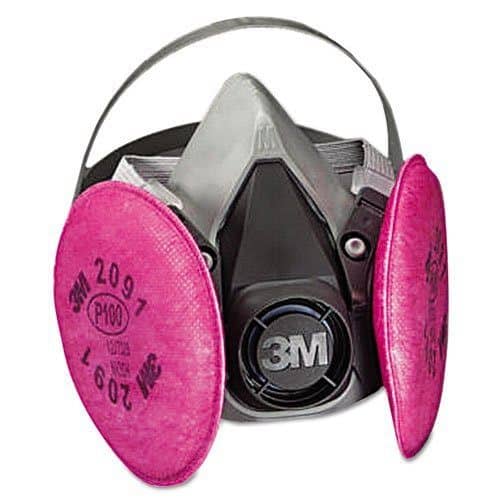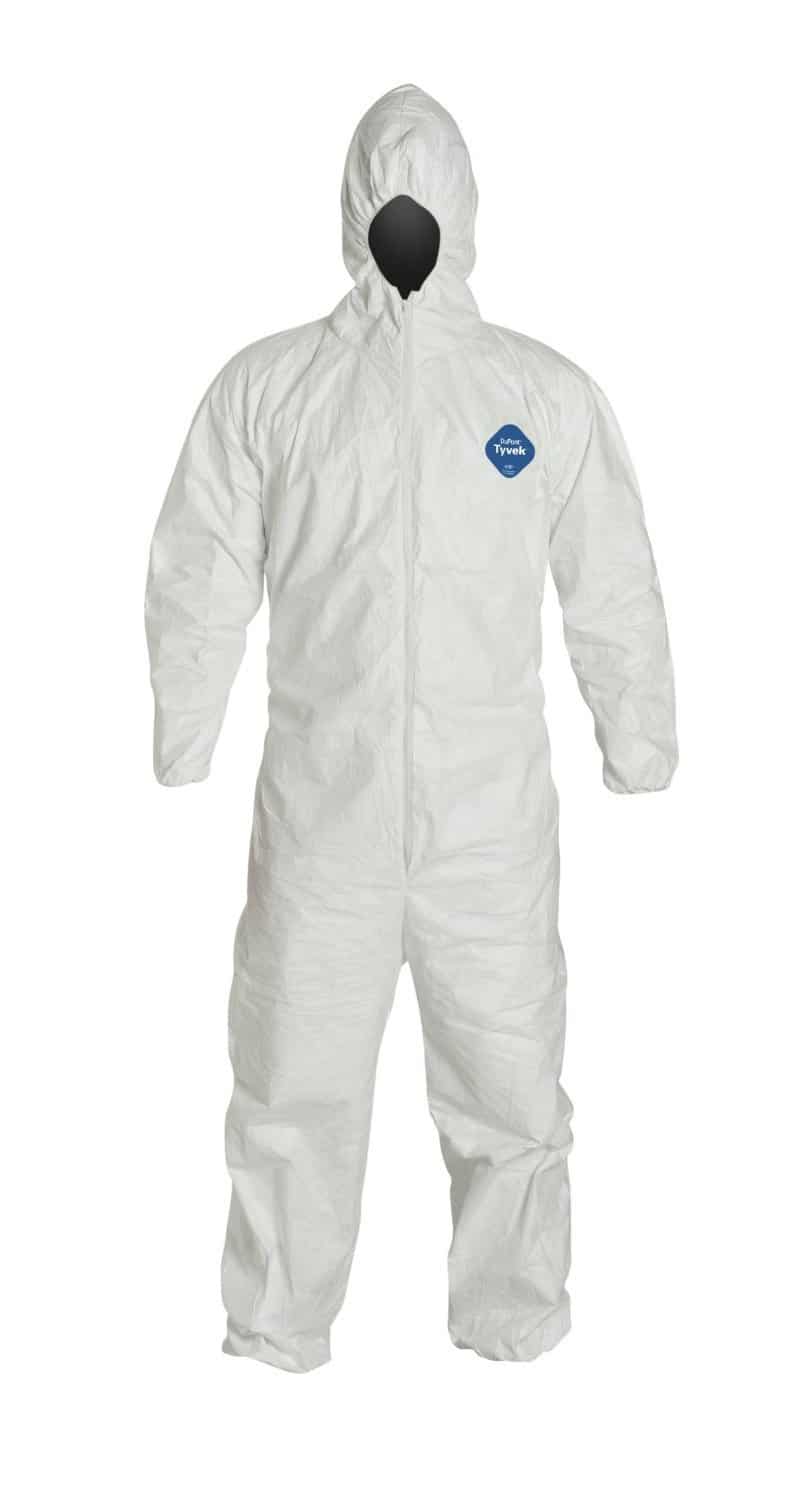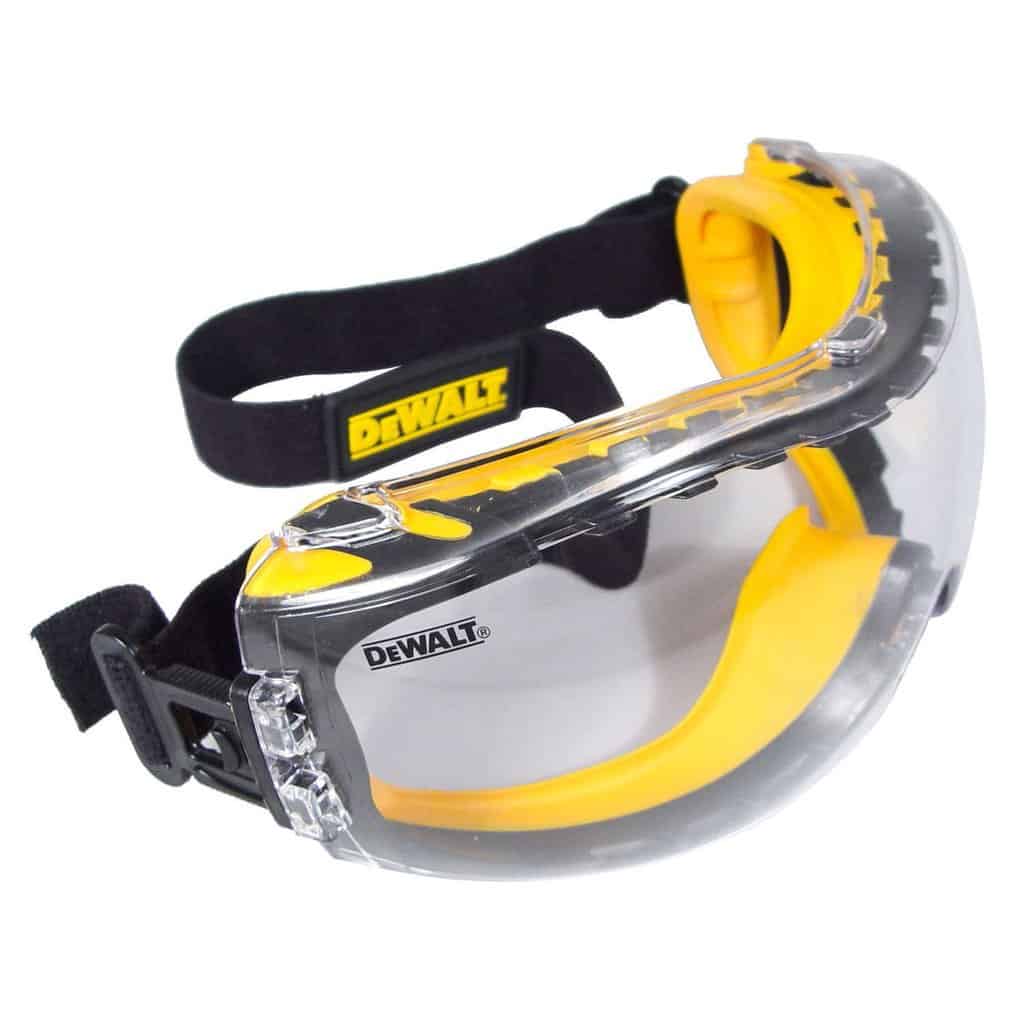Background and History of Asbestos Vinyl
Asbestos vinyl flooring was widely used until 1972. Vinyl is made from a combination of ethylene and chlorine that result into a plastic resin. Back then, asbestos was the additional component that improves its strength and insulating properties. Apart from vinyl flooring, asbestos was also used in wallpapers and ceiling tiles.
If the vinyl is intact, it doesn’t pose any threat. However, problems started to arise when floorings are cut, damaged, or get worn out through time. Back then, those most susceptible to having asbestos related diseases were vinyl factory workers, floor installers and construction workers.
Don't Guess - Test and Have Peace of Mind!

When the dangers of asbestos became an issue, then careful vinyl flooring asbestos removal became an issue. One option is just covering asbestos flooring with the new flooring material like carpet, vinyl tiles or sheet vinyl, laminate or hardwood flooring, or even ceramic tiles and stone.
Testing for asbestos in vinyl flooring can be done by professionals or by yourself to determine “is there asbestos in my vinyl flooring” or not. Asbestos in vinyl flooring isn’t the end of the world, but asbestos and vinyl flooring do cause concern for your health. Use precaution if you elect to remove asbestos vinyl flooring so that its potential doesn’t become your reality.
Until 1972, asbestos was used in a variety of building material such as roofing, exterior siding, window sills and linings, and vinyl flooring. Asbestos is a group of minerals known for their strength, flame/heat resistance, and indestructibility, and was considered ideal for insulation and fireproofing. However, once it was discovered that asbestos fibers can result in severe illness and disease when inhaled, the use of asbestos was banned by the EPA.
How to Check if There is Asbestos Flooring in Your Home.
Unless clearly marked on the product’s label, asbestos is impossible to identify without examining a sample under a microscope.
A. Size of Tile
One easy way for you to know if it is an asbestos vinyl is through the size of the tile. Before the 1990s, these tiles were manufactured in 3 sizes: 9 x 9 inches, 12 x 12 inches, and 18 x 18 inches. At present, standard square vinyl tiles are only 12 x 12 inches.
B. Brand of Tile
If you can still find out which brand of tiles was installed, here are some brands that manufactured asbestos flooring: Excelon, Fashionflor, Flor-Ever, Gold Seal, KenFlex, KenTile, Sears and Solarian.

C. Laboratory Testing
Testing for asbestos vinyl flooring can be done by a professional asbestos contractor or by using a do-it-yourself sampling kit.
- First, you would need to cut off a portion of your vinyl flooring as a sample. Spray water mixed with liquid detergent on the area where you're going to cut the sample from. The mist will ensure that asbestos fibers will not dissipate into the air.
- Using a utility knife, cut a small strip of the tile, around 1/8 x 1 inch in size. Cut all the way to the bottom so you can include the backing and the adhesive in the sample.
- Place the sample into the bag and ship it back to the testing laboratory.
- Wait for the result and if the sample consists of more than 1% asbestos, then it means your floor does contain asbestos.
Your Options: Removal or Installing a New Floor On Top
If your asbestos vinyl flooring is chipped, crumbling, or frayed, it must be removed before laying a new floor. The asbestos fibers from the damaged floor can cause health concerns when the fibers are released into the air. However, intact asbestos vinyl flooring should not be removed because the removal of an intact floor poses a greater risk than simply covering over the old flooring. Leaving the old floor as is will be the most safe action you could take because you’re not disturbing the asbestos in the material.
Considerations and Risks Before Removal
If you determine that the asbestos vinyl flooring must be removed, asbestos abatement contractors are highly recommended. Homeowners living in a single family home may also remove the asbestos but legally, family members and friends who help must do so voluntarily and without pay. Moreover, if you as a homeowner are not confident in your ability to safely remove the asbestos vinyl flooring, hire a certified asbestos abatement contractor. Asbestos removal is difficult work, and can be physically demanding and potentially dangerous to your health.

Asbestos fibers are up to 1,200 times finer than human hair and when inhaled, they can directly penetrate your lungs. Even after 3 decades of inhalation, asbestos can lead to lung cancer, mesothelioma, breathing problems and heart failure. Even the slightest exposure to asbestos can be risky, that is why medical experts emphasize taking precautionary measures when dealing with asbestos in home improvement projects.
Tools and Gears Needed for DIY Removal
If you’ve accepted the health dangers involved, you can minimize the risk of exposure to asbestos fibers for do-it-yourself removal by wearing safety equipment such as a respirator, coveralls, gloves, rubber boots and safety goggles. You need to fasten your gloves to the coveralls with tape, to make sure that they won't come off. Plus, tools such as spray bottles, liquid detergent, putty knifes, a utility knife, a still floor scraper, plastic sheeting, duct tape, plastic garbage bags, a mop, and disposable towels will be needed.
Check out this DIY video on how asbestos vinyl floor tiles are removed.
You can do better than the woman in the video by wearing the other required protective equipment. Note that breathing through a respirator can be challenging and the coveralls can be uncomfortable. Removing the tiles on your own will be time consuming. On average, a 2 square-meter area can take around 1 to 2 days. Do take careful consideration before embarking on a DIY floor removal project.
Steps in Removing Asbestos Flooring
Step 1: Protect The Area
The goal in removing the asbestos vinyl flooring is to remove it in whole pieces without causing any dust.
- Before beginning, the work area must be isolated using the plastic sheet over heat registers, doorways, cupboards, ect. and the heating and air conditions system must be turned off.
- All furniture and other moveable objects should be removed from the room to prevent contamination and to simplify clean-up.
- Access to the work area should be limited to one doorway, with a slit in the plastic door covering to make the entrance as small as possible.
- Post a sign outside the house or inform your friends and relatives that they cannot visit the house at this time.
- Keep the pets away from the work area as well.
- To further prevent asbestos fibers from spreading, the floor must be kept wet using a water bottle. The water will also help loosen the tiles and make removal mush easier.
- Keep your supplies ready near the doorway, which includes water bottles, rags, buckets and trash bags.
Step 2: Removal
- Once prepped and your safety gear on, cut the vinyl flooring into the manageable sections with a utility knife, and remove the pieces by pealing from the edges and using a flat scraper to lift the vinyl.
- Continue to wet the flooring as you scrape and pull to minimize dust. Any vinyl backing that separates from the vinyl flooring can be removed by thoroughly wetting and scrubbing the floor with a pad.

Step 3: Clean Up and Disposal
- As you remove the vinyl, place the pieces in sturdy plastic trash bags to avoid leakage and mark the bags "Danger! Asbestos-Containing Materials." Regulation also states that you should write your last name, address and removal date on the trash bag. The trash bags should be 33 x 50 inches in size and should be 6-mil thick polyethylene.
- The asbestos debris can only be disposed of in a landfill that accepts asbestos-containing waste. Consider calling the land-fill before you go to ensure you understand all their requirements.
- Careful clean-up is important when dealing with asbestos, and all potential asbestos dust and particulate must be removed from the work area to avoid future asbestos contamination.
- Wet and remove all debris left on the plastic sheet used to cover the counters, furniture, and equipment. Then roll them carefully and place them inside the trash bags.
- Twist the top of the bags and then seal them with duct tape.
- Wipe all surfaces and scraping tools with a damp cloth. Frequently rinse the cloth and change the water so that the surface in the work area can get truly clean. Once you're done with the rags, dispose them properly.
- Collect all your tools and put them in a bucket or plastic bag, so you can clean them later.
- Next, stand on a plastic sheet and spray yourself or your companion with water to wash down any remaining asbestos fibers. Only then will you be able to remove your respirator, gloves, boots, goggles and coveralls.
- Place your towels, mop heads, and coverall suit and gloves in the disposal bag. You can dispose of the boots or place in a plastic bag for cleaning later. Remove the filters in your respirator and dispose of them
- To ensure that your skin and hair is free of asbestos, immediately take a complete shower and wash carefully.
Don't Guess - Test and Have Peace of Mind!

When the dangers of asbestos became an issue, then careful vinyl flooring asbestos removal became an issue. One option is just covering asbestos flooring with the new flooring material like carpet, vinyl tiles or sheet vinyl, laminate or hardwood flooring, or even ceramic tiles and stone.
Testing for asbestos in vinyl flooring can be done by professionals or by yourself to determine “is there asbestos in my vinyl flooring” or not. Asbestos in vinyl flooring isn’t the end of the world, but asbestos and vinyl flooring do cause concern for your health. Use precaution if you elect to remove asbestos vinyl flooring so that its potential doesn’t become your reality.




ok Home Depot will not lay ceramic tile over our sheet vinyl flooring which was laid when the house was built in 1986, their reason is that the adhesive might have asbestos in it.
The adhesive or the sheet vinyl? If they’re worried about asbestos in the adhesive, that’s just plain silly since the vinyl is over it. Did a sales person tell you this? Did you ask a supervisor? You could check with some local home improvement contractors and see what they think, maybe even get one to install it.
How large of an area are you doing? Ever consider doing it yourself or having a tile contractor/home improvement contractor install it? Shoot, you might even try going to a different Home Depot, Lowe’s or other store.
is it safe to drill through asbestos tile it was 2
2mm thick theres about 6 to 8 holes half inch wide and how safe is the room does it have to be tested .also there is some breaking and chiping in some others there was a hoover used a industrial one there apperas a lot of dust on outside bair in mind its woodwork room to. the whole floor is this type tile but in mostly in good condition
Hi Thomas,
It is never safe to drill through asbestos tile. The asbestos will become airborn, posing a serious threat to your health. I suggest you read up on asbestos dangers – go to your favorite search engine and start from there.
If you have dust, chipping, cracking, it’s very unstable and unsafe. You need to have it removed by a professional or cover it up completely. You can have the room tested if you want, but why would you do that if you already know the tile contains asbestos?
I’m serious, read up on asbestos dangers, removal, etc. It’s seriously bad stuff – you’ve endagered yourself and anybody else who has been in there.
Hello,
We are planning on tiling our front entrance in our home…there is vinly flooring currently in place and our house was built in 1997. We went to HOme Depot to see if there was a product to help remove it and the sales person alarmed us and said that there is asbestos in it..what are the chances of that and should we remove it?
Asbestos flooring products were banned in the 1970’s. I doubt you have anything to worry about since your house was built in 1997.
Hi!
Thanks for your informative article. We recently purchased a Mid-Century Modern style home, built in the 1950’s. The kitchen is in its original state, however, the previous owners put wall to wall carpeting in the kitchen that was ironed onto to the previous 1950’s flooring.
The carpeting is already too high and interferes with the opening of some cabinets. I wanted to remove the carpeting with a heat gun and use the original flooring, but now I am alarmed by the thought of asbestos being in the floor. According to the previous owner, it is a tile type floor, not lino.
So my question is: Is it possible to use this type of flooring, even though it might contain asbestos? I read if it is encapsulated in the flooring, as long as it isn’t damaged, it isn’t harmful. Is there some sort of coating that we could put over it to seal it good and tight without have to pull it up? Or would our best bet be to cover it with another type of flooring?
Also, I am hesitant to pull up the carpet and purposely damage a tile to get a sample to send to the lab.
Ok, let’s tackle your questions in order.
#1: So my question is: Is it possible to use this type of flooring, even though it might contain asbestos? Answer: Yes, what you’ve read is correct.
#2: Is there some sort of coating that we could put over it to seal it good and tight without have to pull it up or would our best bet be to cover it with another type of flooring? Answer: You can do either one (or both!) so long as the flooring is intact. There are different products you can use to coat it, but the most durable is going to be an epoxy type paint, the stuff is about indestructable.
I can understand why you’d be hesitant to pull up a sample to send to the lab. If you do remove the flooring and it can be done without damaging the tiles (not likely!) they still have to be disposed of properly.
I have a mid-1970s townhouse, and had already pulled up about 50 vinyl tiles in the basement when I discovered that the tiles have asbestos in them – the analysis says 2% chrysotile, 98% particulate, so I’m guessing that means they are 2% asbestos. I was using a long heavy pole with a blade on the bottom that was working great, but broke up most of the tiles, and then just shoveling up all of the broken tiles and putting them out with the trash.
So OK, should I prepare for lung cancer? I stopped busting up tiles when I was alerted to the asbestos possiblity, but there are about 20 or so broken tiles in my basement and I don’t know what the heck I’m supposed to do now. I really can’t afford $20,000 for men in space suits. Should I just stop now, clear out the broken stuff and put plywood down on top of the whole floor (it’s about 300 square feet total) and new vinyl on top of that, or what? Thanks for any help
Hi Nan,
Yes, cover it up – that will work fine. Hopefully you won’t suffer any health issues down the road.
OK, between the time of my original posting and today, I have spoken to two very knowledgable guys in the construction industry (not connected to each other). Both are licensed builders, one is now a county code and building inspector and the other does abatement work for a private environmental group. They both said the same things about my 2% chrysotile floor: No Big Deal.
They recommended that I wear a good face mask while working ( I got one for $15 that is used for scraping lead paint and they said that one is fine), and to damp down the area being worked on. They also said breaking tiles is not a problem because the asbestos is so fused in there, but I should not sand, grind or drill the tiles. Which I wouldn’t anyway. For disposal, it is legal for me to just put it out with the trash, but the best thing would be for me to cart it to a dump that accepts “category 1” waste, which they said most dumps do (mine does, I checked).
That’s what I’m going with. I”m sure the answer would be different if the tiles contained 60% asbestos. I hope this helps others in making a decision.
I do hope they know what they’re talking about. Different states have different laws, but it is regulated by the EPA at a national level.
I just bought an old home that has abestos flooring tile. I was cleaning out the basement and noticed about 7 tile were loose, just lying on the floor, and I gently removed them and placed them in a plastic bag. Then I carefully swept some of the remaining dust and put that in the bag as well. I threw the gloves out and rinsed the broom. After reading up on asbestos tile, I am going to call in an expert to look at the rest of it and remove the few tiles I have in the bag. My question is, do I have reason to worry now about my health?
Hi Tim,
Hopefully not, since your exposure time was very short and the dust wouldn’t have been that much. If the tiles that you removed were intact then there really shouldn’t be much asbestos in that if any. It’s just one of those things that you don’t know.
My husband and I bought an old property with a 1956 aluminum trailer on it. It had asbestos tiles under sheets of vinyl flooring. It all had to come up, as it was very uneven, He got me started and I went to work, The asbestos tiles crumbled, and it was black and a very fine dust that flew everywhere. We knew nothing of asbestos poisoning or mesothelioma. Since then he died of it. They think he died from his plumbing history of tearing down old buildings with asbestos lined pipes. That was back in the late 50’s and early 60’s when he did that work.
I did the flooring tiles in the early 90’s. I am concerned about my lungs. I recently went to the hospital for acute bronchitis and double pneumonia which cleared up enough in 6 days to go home, and finally totally clear in another couple weeks.
If the exposure to the asbestos is to do me harm like it did him, what should I look for in symptoms, and how long approximately, will it take to present?
Scared
Glenda
Hi Glenda,
It’s really sad to hear that your husband had to die because of exposure to asbestos. So many people today do not take the threat seriously. Sadly, years ago, people didn’t realize how exposure to asbestos or lead could impact one’s health.
I’d really recommend you talk with a pulmonary specialist or at the very least go to webmd or another health site and look up information on mesothelioma. I’m a far cry from a health professional and cannot, in good conscience, give health advice.
My daughter and son-in-law are buying a 1950’s house. The downstairs will be used as a recreation room. At the moment the floors are covered with asbestos tile with several areas of tile broken and completely removed. They are aware of the problem and are considering carpeting over the entire area. Should they fill in the broken tile with other safer tile and then paint with epoxy before carpeting?
Hi Pam,
I wouldn’t recommend carpeting if there are any moisture issues or if there is high humidity. Carpeting is nasty for harboring allergens such as mold and mildew (to just name two!). Filling in with other tile will work, as would just using some thin-set, concrete or grout. Painting over with epoxy afterwards is a good idea.
Dear Flooring Lady, we recently sent some samples of our 1955 home to an absetos testing center. Luckly our plaster walls & ceiling came back negative but the flooring in our kitchen tested positive for 15% cyrsotile. From what we can tell our flooring has a couple of layers of vinyl and ugly tile underneath. We are planning on putting down cork flooring and since there are already so many layers we can’t just put it on top. We would like to remove the vinyl but leave the tiles intact (we only had the vinyl tested not the tiles) so we are not sure if the tiles also contain absestos. I guess our question is how dangerous is 15% and should we follow the same procedure for removing it. We have a newborn at home and want to be as safe as possible but we can’t afford a removal company. Thanks
~Christine
Hi Christine,
15% is dangerous. The tile probably contains even more asbestos and the adhesives too. You really should have it removed professionally. You can do it yourself as well, but it must be done as a wet process so that asbestos particles don’t become airborn – then you’ll run into the problem of disposing of it properly (and legally). If you have a removal company do it, they take care of that aspect as well. With so many layers, I’m afraid this may be your only true option.